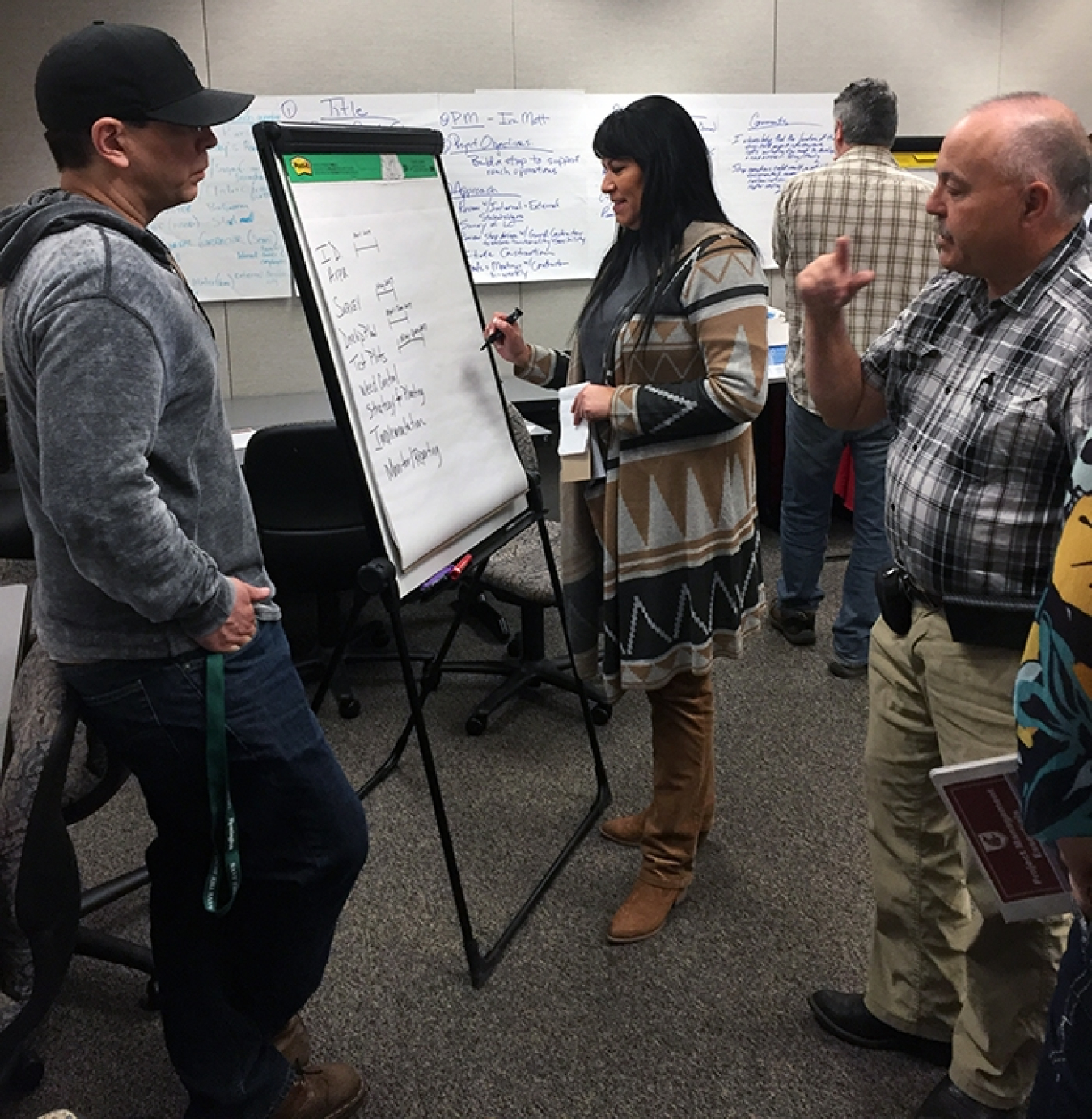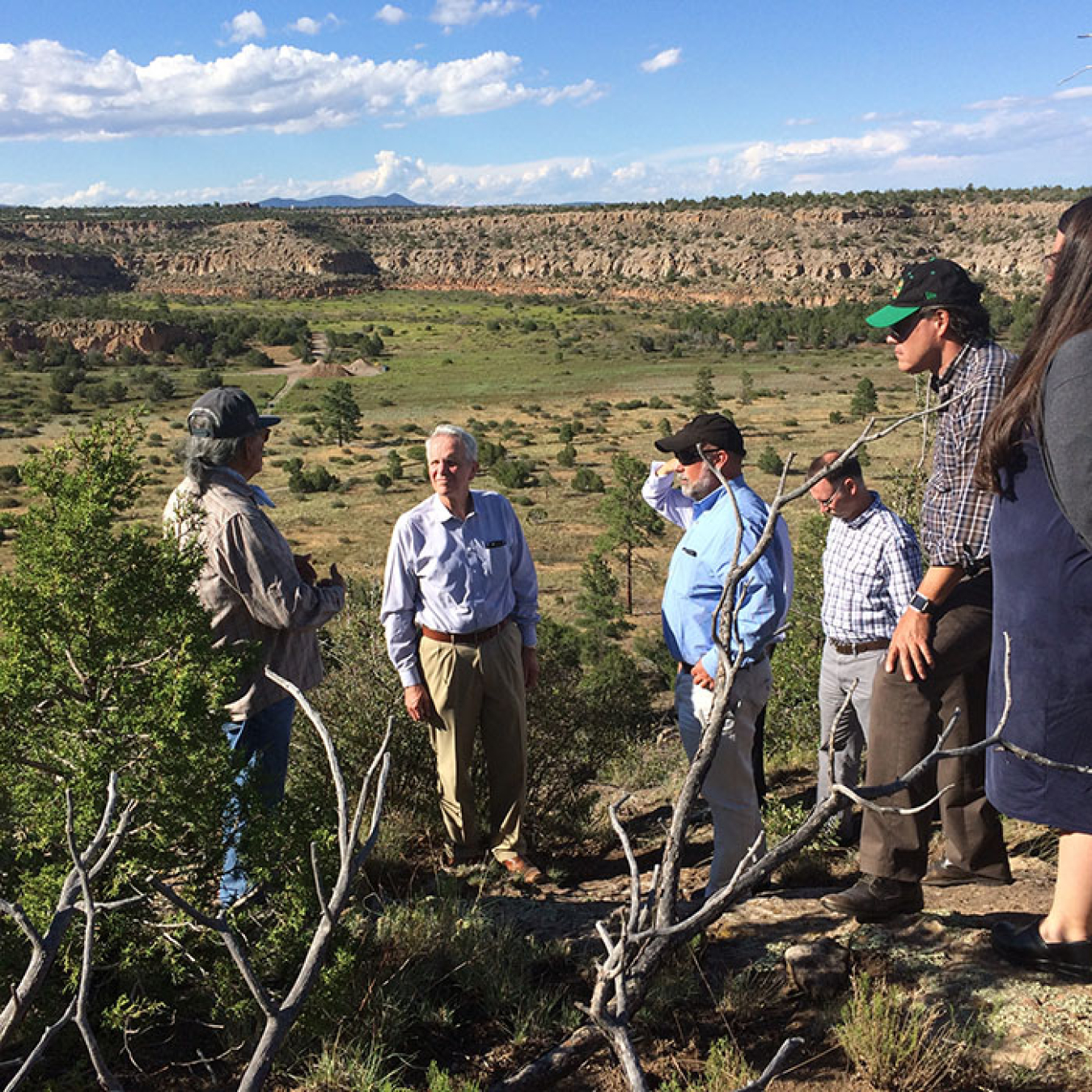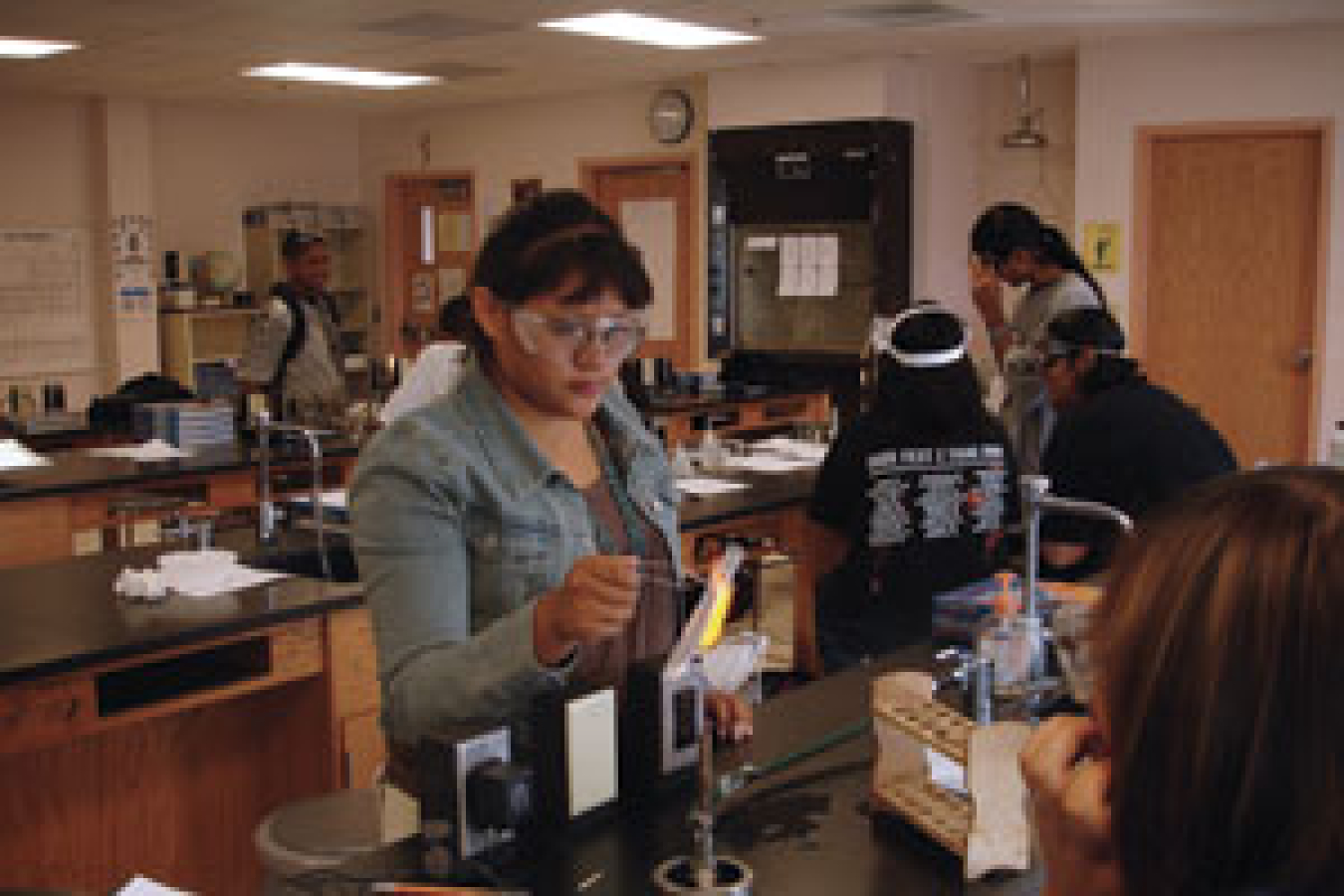EM is involved in the cleanup of nuclear waste at nationwide sites and facilities. The waste, a result of the production of nuclear weapons, has affected sovereign tribal nations located near these facilities. These tribal nations have been impacted by different types of waste contamination, and their participation in the EM mission is critical.
EM actively supports DOE’s American Indian Policy (DOE Order 144.1) and works directly with tribes on a government-to-government basis through cooperative agreements, agreements-in-principle, and memoranda-of-understanding, to enhance tribal involvement in pertinent cleanup decisions and site activities.
Site Programs & Cooperative Agreements
 Mike Sobotta of the Nez Perce Tribe, left to right, Michelle Burke, an EM contractor, and Steve Link of the Confederated Tribes of the Umatilla Indian Reservation collaborate on a schedule for a mock tribal revegetation project.
Mike Sobotta of the Nez Perce Tribe, left to right, Michelle Burke, an EM contractor, and Steve Link of the Confederated Tribes of the Umatilla Indian Reservation collaborate on a schedule for a mock tribal revegetation project.Hanford
The Confederated Tribes of the Umatilla Indian Reservation (CTUIR), Nez Perce Tribe, and Yakama Nation are important stakeholders with treaty rights and interests at the Hanford Site. DOE environmental cleanup activities have the potential to impact natural and cultural resources and to interfere with American Indian religious practices. Through cooperative agreements, tribal staff and consultants of the Yakama, Nez Perce, and CTUIR are engaged on a daily basis with DOE and its contractors. The principle activities by tribes include reviewing and commenting on plans and documents, participating in meetings at the request of DOE, monitoring cultural resource sites, participating in site surveys, and identifying issues that will require additional consultation with elected officials on a government-to-government level.
In addition to its primary cooperative agreement related to involvement at Hanford, the CTUIR also receive additional financial support in regards to the Tribal Fire Department. The CTUIR have first responder capability and responsibility for transportation accidents on their reservation. This transportation and emergency response grant provides supplemental funding to support training, equipment and some personnel costs in recognition of the shipments of hazardous materials routed directly through the CTUIR reservation to and from Hanford.
- Confederated Tribes and Bands of the Yakama Nation
- Confederated Tribes of the Umatilla Indian Reservation
- Nez Perce Tribe
For more information, please visit the Richland Operations Office .
West Valley Demonstration Project
The Seneca Nation of Indians has interests and concerns regarding the West Valley Demonstration Project Site. Like at Hanford, DOE environmental cleanup activities have the potential to impact natural and cultural resources and to interfere with American Indian religious practices. Through a cooperative agreement, tribal staff is engaged on a frequent basis with DOE and its contractors. The principle activities engaged by tribes include reviewing and commenting on plans and documents, participating in meetings at the request of DOE, monitoring cultural resource sites, participating in site surveys, and identifying issues that will require additional consultation with elected officials on a government-to-government level.
In addition, the Seneca have first responder status and are concerned regarding the transportation of hazardous materials routed through the Seneca reservation to and from the West Valley Demonstration Project. The Seneca coordinate with West Valley to insure compliance with established transportation notification protocols.
For additional information, please visit the West Valley Demonstration Project.

EM representatives meet with Tribal leadership of New Mexico Pueblos in August 2017. Los Alamos National Laboratory is in the background.
Los Alamos and National Laboratory (LANL)
The Los Alamos Pueblos Project (LAPP), comprised of four New Mexico pueblo governments (Santa Clara Pueblo, Pueblo of Cochiti, Pueblo of Jemez, and Pueblo de San Ildefonso), has individual cooperative agreements to develop and maintain environmental monitoring programs. The LAPP is funded by both EM and National Nuclear Security Administration/Defense Programs (NNSA). Funds provided vary from one Pueblo to another. In addition, EM funds the Santa Fe Indian School to work with the LAPP pueblos.
Provisions of the agreements allow LAPP tribal program personnel to obtain the necessary training to monitor and sample soil, air, groundwater, and other media. Such sampling is performed both at the pueblo level and jointly with LANL. The agreements allow for the formation of pueblo structured environmental programs to ensure DOE operations are not impacting the pueblo lands; and to the extent there are impacts, allow for continued monitoring of contaminated sites. The Pueblos utilize the Santa Fe Indian School to assist in monitoring activities and collaborate with Los Alamos National Laboratory on issues of mutual interest. Currently, LAPP personnel are actively participating, at the request of DOE, NNSA, and LANL, in reviewing and commenting on the LANL Site-Wide Environmental Impact Statement.
- Cochiti Pueblo
- Jemez Pueblo
- Santa Clara Pueblo
- San Ildefonso Pueblo
For more information, please visit the Los Alamos Site Office , Los Alamos National Laboratory , and/or the Sandia National Laboratory .
 Students running experiments at the Santa Fe Indian School.
Students running experiments at the Santa Fe Indian School.Santa Fe Indian School – LANL also supports the Santa Fe Indian School. DOE values the importance of education and supports initiatives to help educate and train tomorrow's scientists and engineers. Specifically, EM continues to support an innovative program at the Santa Fe Indian School, which encourages tribal youth to consider careers in scientific and technical areas of environmental protection. In a community-based approach, students learn hands-on environmental monitoring and analytical skills. They work with Pueblo environmental program staff in water and wildlife monitoring as well as cultural resource protection activities. What the students learn in the classroom is applied in field work important to the department's clean-up activities.
Waste Isolation Pilot Plant (WIPP)
The DOE Carlsbad Field Office funds a number of tribes and Pueblos along the WIPP transportation corridors. The funds are for first responder training and support. The following tribes and Pueblos are involved with WIPP transportation corridors:
Acoma Pueblo
Nambe Pueblo
Navajo Nation
Pojoaque Pueblo
San Ildefonso Pueblo
Laguna Pueblo
Shoshone-Bannock Tribes
Confederated Tribes of the Umatilla Indian ReservationFor additional information, please visit the Carlsbad Field Office .

